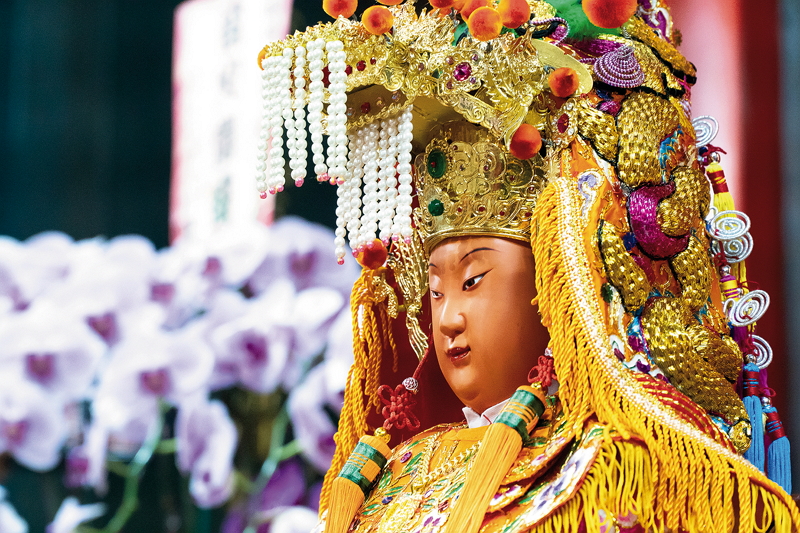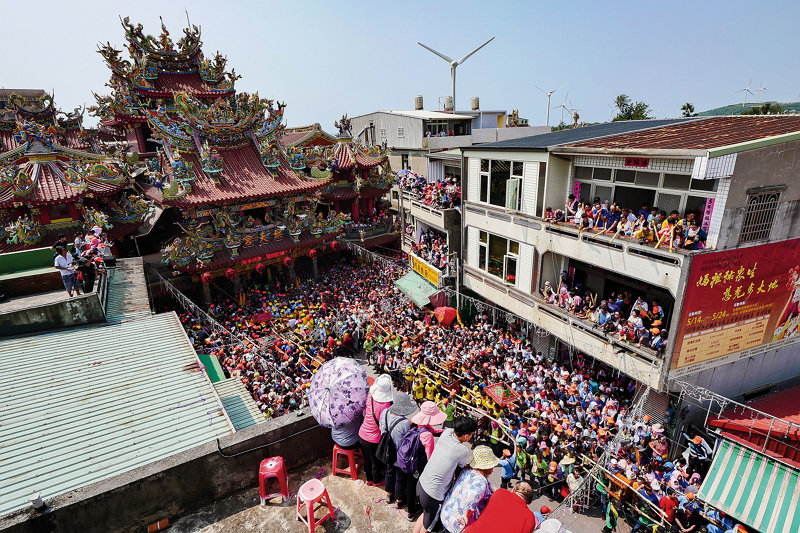
Gouzao, Beigang Township, Yunlin County: As the Mazu procession moves through the fields, people set off firecrackers to celebrate the coming of the deity. (photo by Lin Min-hsuan)
At 11:40 p.m. on May 16, 2018, there was quite a hubbub at Gong Tian Temple in Tong-xiao, Miaoli County, as the annual Bai-sha-tun Mazu Pilgrimage set off. This year Mazu indicated that she wanted to be taken to Chao-Tian Temple in Bei-gang, Yun-lin County, within 36 hours. The round trip of nearly 320 kilometers on foot would be a rigorous test for the temple workers and the faithful.
The pilgrimage has been practiced at Gong Tian Temple for over 150 years. The schedule is worked out in advance by divination. The route, and the procession’s stops along the way, are decided by Mazu guiding the palanquin bearers. This is a special feature of the Baishatun Mazu Pilgrimage.
During the eight-day journey we followed Mazu as she passed through fields, paused at a supermarket, and gazed out over believers along the route who sought her protection by kneeling or prostrating themselves to allow her palanquin to pass over them. But what we found most moving of all was the unaffected goodwill and innocence that shone in the faces of ordinary people along the way.

The Baishatun Mazu is a “soft” statue, made with joints so that its arms and legs can move. It is thought to be over 200 years old. (photo by Lin Min-hsuan)

Everywhere that Mazu’s palanquin travels, the route is thronged with the faithful. (photo by Lin Min-hsuan)

art by Hu Ju-yu

The route of the annual pilgrimage is not fixed. Sometimes Mazu will go to a supermarket, sometimes to a school. (photo by Chuang Kung-ju)

A retail market in Dadu, Taichung. (photo by Chuang Kung-ju)

Dacun Junior High School, Changhua. (photo by Chuang Kung-ju)

Dadu Bridge, Taichung. (photo by Chuang Kung-ju)

On the final day, for Mazu’s return home, they switch from a palanquin with four bearers to one with eight. Photographers vie to record this moment, when Mazu’s face is visible. (photo by Jimmy Lin)

After the eight-day pilgrimage, believers in Baishatun respectfully welcome Mazu home to Gong Tian Temple. (photo by Jimmy Lin)

After the eight-day pilgrimage, believers in Baishatun respectfully welcome Mazu home to Gong Tian Temple. (photo by Jimmy Lin)
For more pictures, please click 《The Baishatun Mazu Pilgrimage》











